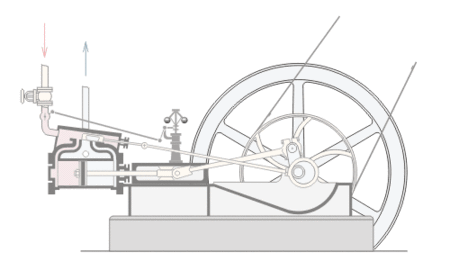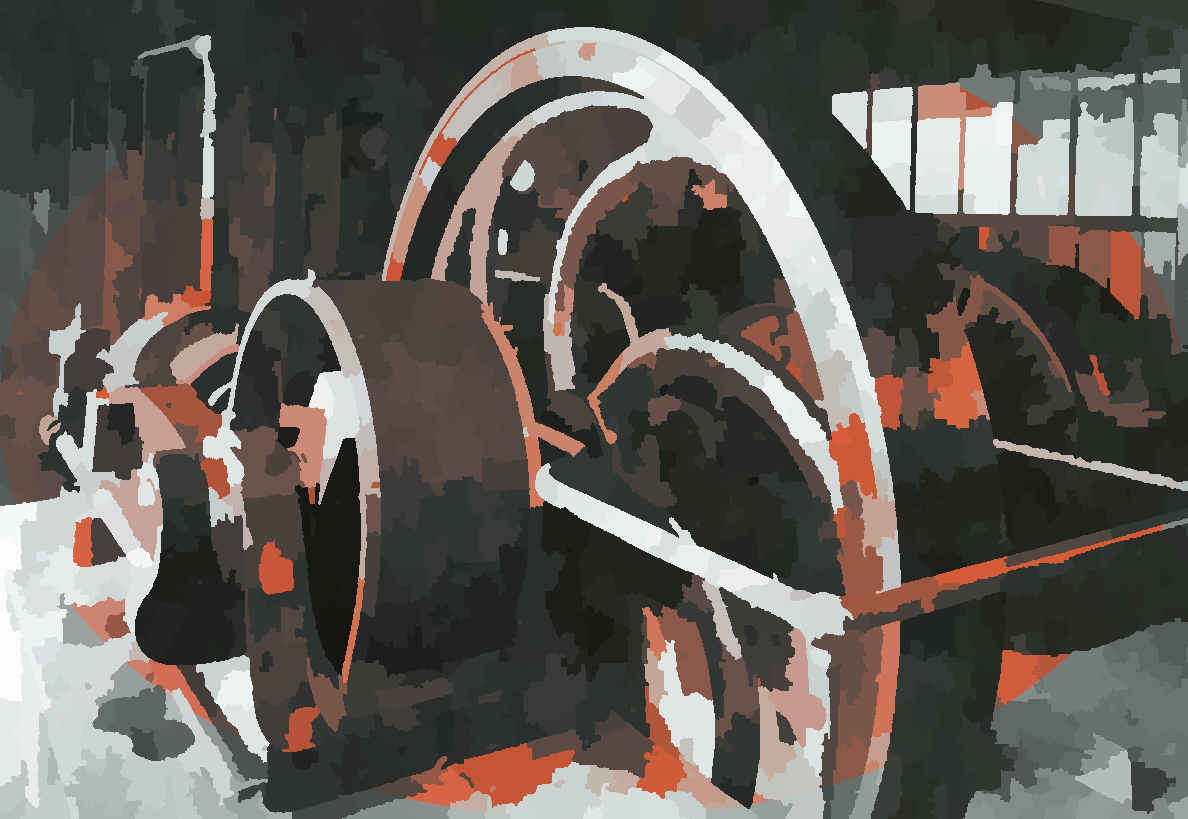
PLANTING
- These seedlings were planted in March of 2023, seen here in May. For
some reason, the tree these acorns were collected from, never produced
any saplings naturally, from our knowledge, not since 1981. Perhaps this
was because the squirrels and other animals have been enjoying a feast.
The
experience of planting
and growing a tree from seed, can be very rewarding. Trees lock up carbon
dioxide, a major contributor to global warming. so, not only are you
watching nature in action, but also helping the planet to balance the
books.
These
days most of us know about climate
change, and how important trees are ecologically. But, if this is
new to you, one of the best ways of tackling global
warming is to plant trees. Other ways are using solar power,
switching to a supplier of electricity
that sells wind generated energy, and perhaps, driving an electric car.
Or, at least a vehicle that returns over 80 miles to the gallon. And,
there are plenty of those about, not the 4x4 gas guzzler brigade. Who
obviously don't give a fig about low carbon living. The exception being
farmers and forestry workers. The best electric
cars run on green
hydrogen and use fuel
cells. Unfortunately, they are expensive and the infrastructure to
support them, is slow in coming, as policies at present tend to support
the use of fossil
fuels. Including subsidizing oil and diesel.
We know, that sounds crazy, given all the forest
fires and towns burning to the ground; but it is true.
If you want to help cool the planet, growing trees costs a lot less, and
policies are all in favour. For the price of a little compost (that you
can make yourself), and perhaps a pot. You can get started. We used old
plastic trays from supermarkets, that would otherwise have been thrown
away. We don't like single
use plastic. By re-using before responsible recycling, these plastic
trays have become double, or even treble use plastic. Hopefully, that
will never reach the ocean to become marine
litter. Not if we can help it.
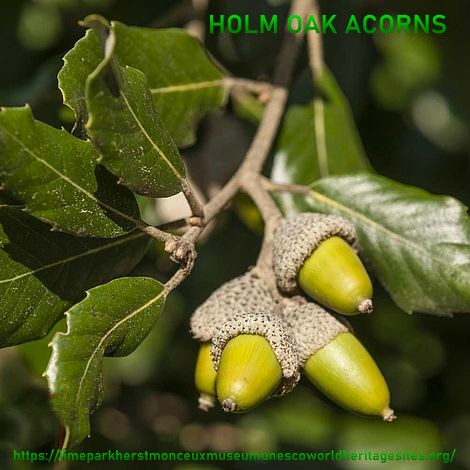
The Holm Oak is an easy to grow evergreen, which can either be grown as a full-sized tree, or clipped into a hedge. The glossy, tough foliage has a contrasting white underside, and is later accompanied by shiny acorns.
The Holm Oak is ideal for hedging in exposed and coastal areas; plants are exceptionally drought resistant and tolerant of pollution. Plants of Holm Oak are easy to clip and maintain, and can be grown in sun or shade. Height as full-size specimen tree: 25m (80'). Spread: up to 20m (70').
THE HOLM OAK
The holm oak (Quercus ilex), also known as the holly oak or evergreen oak, is a large, evergreen tree with a rounded crown. The young leaves look similar to holly leaves and have white undersides, while the older leaves have smoother edges. In June new, whitish young leaves appear at the same time as yellow catkins. After being pollinated by wind, the female catkins develop into acorns, which are smaller and more pointed than those of our native English oak (Quercus robur) and sessile oak (Quercus petraea).
Holm oak is tolerant of salt spray and strong winds, so is a good choice for coastal gardens and is often planted as a windbreak. It's also tolerant of pollution, so can be grown in urban gardens. Holm oak can also be clipped into large topiary shapes or grown as a hedge. It's also one of the best screening trees.
Holm oak is native to the Mediterranean and was introduced to Britain in the late 1500s. In severe winters it may lose its leaves or die, so is best grown in milder parts of the UK.
The holm oak is not as good for wildlife as our native oak (Quercus rubra) but the catkins are a source of pollen for bees and other insects, and large birds and small mammals eat the acorns. Its dense, evergreen canopy gives year-round shelter for birds.
ABOUT YOUNG TREES
Saplings are young trees with a diameter of 1 to 5 inches at a point that is 4˝ feet from the ground. Saplings may be balled and burlapped, bareroot, or containerized. Seedlings are young trees with a diameter of up to 1 inch at a point that is 4˝ feet from the ground. Seedlings are usually bareroot.
A seed is a design used by trees for millennia to ensure the next generation of trees exists. Seeds have evolved into different sizes and shapes so they can be dispersed by wind, water or animals. Inside each seed is all the resources it needs to survive independently until it reaches a safe place to grow.
A shoot becomes a seedling when it is above ground. This stage is when trees are most at risk from diseases and damage like deer grazing.
A tree becomes a sapling when it is over 3ft tall. The length of the sapling stage depends on the tree species, but saplings have defining characteristics:
- Flexible trunks
- Smoother bark than mature trees
- An inability to produce fruit or flowers.
Trees with really long life spans like yews and oaks are saplings for much longer than shorter-lived species like silver birch and wild cherry.
A tree becomes mature when it starts producing fruits or flowers. This is when the tree is at its most productive. How long it will stay productive depends on the species.
A typical English oak tree starts producing acorns at around 40 years old, peaking in productivity around 80-120 years. Oaks, in general, can be productive for 300 years then rest for 300 years before moving on in the life cycle. In contrast, rowan starts producing berries after around 15 years, and by 120 years or so it is already at the end of its life.
ANCIENT TREES
The next stage of a tree’s life comes when it passes beyond maturity and is older than trees of the same species. It has become ancient. Depending on the species, a tree might be called ancient when it is only in its early hundreds, like rowan, or when it is thousands of years old, like yew. This means we can’t define ancient trees just by age. Instead, we look for key characteristics, like a small canopy and a wide trunk which is likely to be hollow, both of which show great age.
HARVESTING
Collect the acorns from the ground in the autumn, often following the first strong wind. Acorns that have fallen onto grass are less likely to have been damaged than those that fall onto hard surfaces.
Check that the acorns are healthy. You can do this by simply looking at them and feeling them if you don’t have many. Any visibly damaged or with holes in are unlikely to grow.
If you have quite a lot, you can put them into a bucket (or buckets) of water.
If they float, they may not grow, but this isn’t foolproof! Many that float may still grow.
Try squishing a few that float between your fingers. If they are firm and look healthy, plant them anyway. You could cut some in half to see what they look like inside – watch your fingers! Any signs of insect damage, bruising or rot will probably cause them to fail.
STORAGE
In the short-term, acorns can be stored in bread baskets for a week or two. They must be kept cool and out of direct sunlight.
There is normally no further extraction needed with acorns after collection. They can be separated from any twigs or leaves if you have the time, but it is not essential.
Acorns are not dormant, so they need no pretreatment for them to grow. In fact, our main difficulty is stopping them from germinating until we want them to! If they are kept in damp conditions, they will grow very quickly, even without soil.
SOWING
Holm oaks can be propagated from its acorns (seeds). Sow when they are fresh, from September to December.
Plant two acorns in a pot filled almost to the top with peat-free compost. Any container will do – a yoghurt pot or root trainer. Make sure there are drainage holes in the bottom, and just cover the acorn with compost (about 2cm deep). Protect the acorns from predation! Mice and jays love them, so cover them over with fine wire mesh to keep them out.
1. Plant in individual small pots, filled with peat-free multipurpose compost, around 1cm deep
2. Place in a cold frame or sheltered part of the garden. Protect from animals and birds
3. Pot on into larger, deeper pots once roots begin to fill the opt. Grow on in a sheltered spot
If you are sowing outside, sow them in good soil to a depth of 5cm and firm. Aim for a density of about 100 plants in a square metre. This means sowing about 200 acorns.
WATERING & FEEDING
It might sound obvious, but never let your pots dry out. Stand them in a shady, sheltered spot, out of doors and water, from the top, until the seedlings emerge. From then on, water from below by placing the container in a tray of water and let the compost soak it up through the drainage holes. Water plants in seedbeds if needed.
Then wait and be patient. It could be May before the seedlings appear. Your oak seedling will grow quite happily in a 1-litre pot or root trainer for the next two summers. Feed with a liquid fertiliser during the summer to encourage maximum growth, but do not over feed! This can scorch the roots.
HOW TO PLANT A HOLM OAK
When your oak seedling is at least 200mm (8 inches) tall, it is ready to be planted into its permanent home. Choose a place with enough space for your oak to grow. Remember that it can grow up to 45m high! Prepare the site well by clearing away any weeds or grass and make a hole big enough to accommodate the root ball. Plant carefully in the hole, to the same depth as it was growing previously and firm back the soil.
Grow in any well-drained soil, in sun or partial shade. As it may suffer in severe winters, grow it in milder parts of the UK. Prune to shape in summer if needed.
1. Stand the tree in water to ensure its roots are damp.
2. Dig a square hole that’s slightly wider than the pot your tree is in, but no deeper. Lightly fork the base and sides of the hole to ensure the soil isn’t compacted.
3. Remove the pot from container-grown trees and any wrapping from bare-root ones. Tease out and unwind any circling roots. Stand the tree in the planting hole, then lay a cane across the hole to check that the top of the rootball is level with the soil surface.
4. Backfill around the rootball with the excavated soil, shaking the tree a little to help the soil settle around the roots. Use your heel to firm gently all around the rootball and ensure there is good contact between the roots and the soil.
5. If planting in an exposed site, stake the tree to prevent windrock, which can tear the roots and create a gap around the base of the trunk that can fill with water and encourage rot. The stake should be about a third of the height of the tree, hammered in at a 45° angle. Attach the trunk to the stake using an adjustable tree tie.
6. Water the tree thoroughly, then keep it watered during dry spells for at least the first year.
Keeping your tree well watered in its first year is very important, while its roots are establishing. Mature trees are drought tolerant and should get all the moisture they need from rainfall. Holm oaks do not need pruning but if you want to clip a tree or hedge into shape, do this in summer.
PROBLEM SOLVING
Some leaves are likely to fall in late spring and summer as the new ones emerge. This is normal and nothing to worry about. The tree may also lose its leaves in severe winters.
Aphids can be a problem on holm oaks. These are often dealt with by birds and other predators.
Leaf miners can affect the leaves – you may see blotches or 'mines' (wiggly lines) on the leaves. This does not affect the vigour of the tree and the affected leaves are usually replaced by fresh ones in late spring and early summer.
Holm oak is occasionally affected by two serious diseases of English oaks, oak decline and acute oak decline.
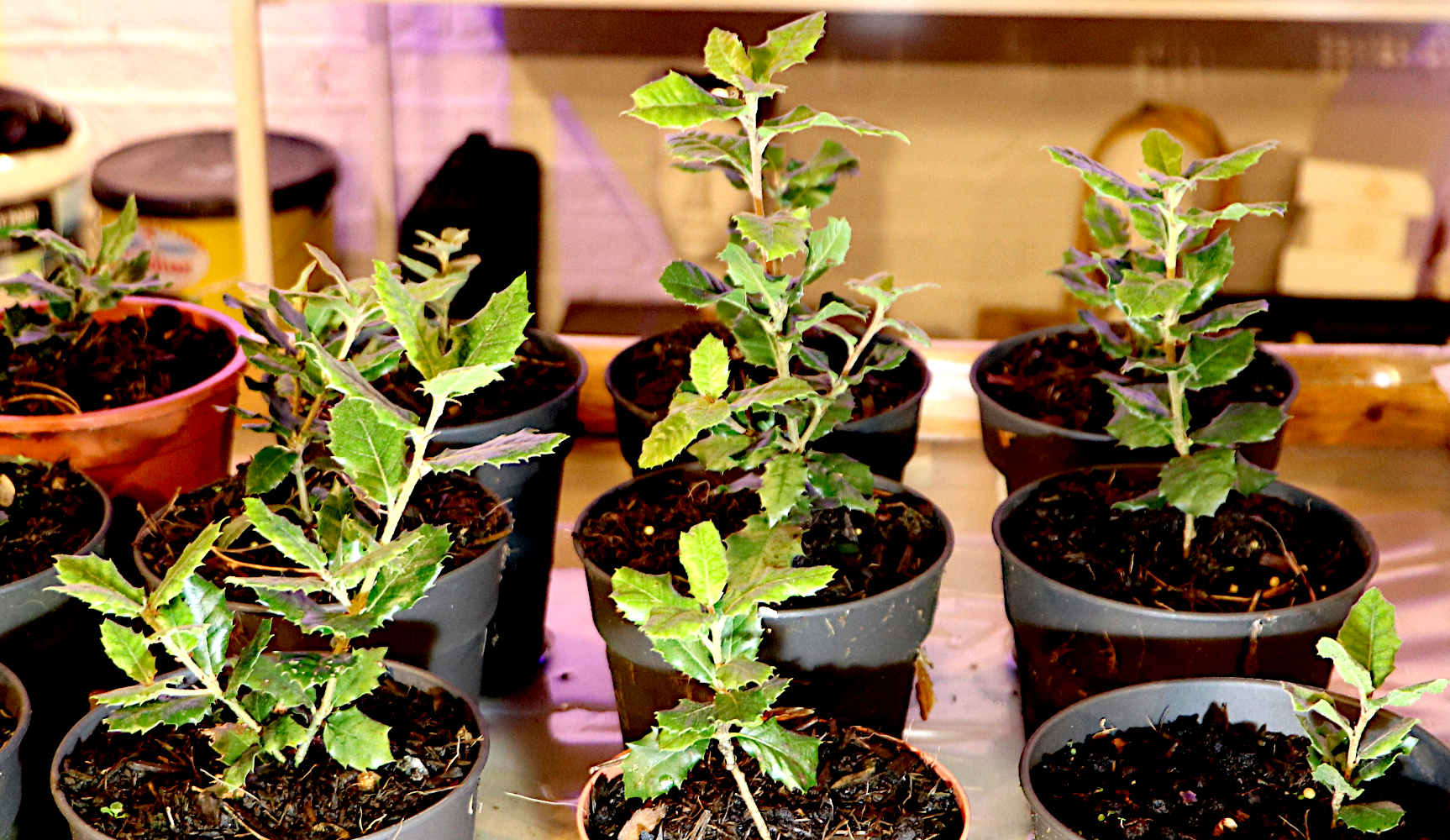
The
same batch of Holm oak seedlings in November 2023. These have been
hardened, and were outside in sub-zero temperatures. And survived that
and several frosts. But, we turned chicken, and decided to help them out
over the winter. Bringing them into a sheltered, but not heated
environment. We understand that they don't like too much heat at this
stage. And in any event, that would run counter to our climate change
efforts. One plant is almost 12 inches (300mm) tall.
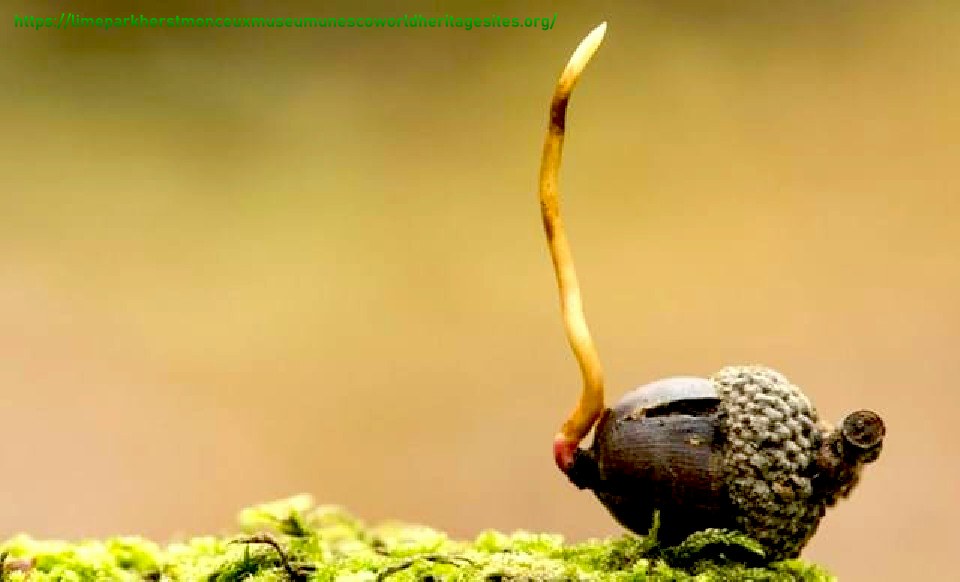
An
acorn sprouting
SUPPORTING
WILDLIFE
It is worth noting that different species within a genus can have wildly differing effects on wildlife. Native oaks (Q. robur and Q. petraea) support immutable species, but their European cousin Quercus cerris do not. There is one theory first proposed in Southwood (1961) that native species support many more species than non-native species - species introduced by humans. It is worth noting that a species native to the United Kingdom isn’t necessarily native to Scotland.
Likewise, trees are concentrated in certain areas. It is worth noting the quantity of species a tree supports isn’t the same as its benefit to wildlife. It tells you nothing of the biomass supported (nor whether they are endangered species, although this is beyond the scope of this article). A tree may support one species in a huge number. As
trees age, the species they support change. An oak’s bark starts smooth but becomes rugged with age, creating a habitat for rough-bark species of lichen.
Different species support the same species at different times of year. While most species of angiosperms flower in spring, the species that flower in summer provide support for bees. Young trees do not support the same number of species as ancient ones. Damage, wear creates habitats for many organisms. Our oldest trees have dead and decaying
wood at their heart of which some of our rarest habitats exist. Open-grown trees - trees grow in the open - are more beneficial to wildlife than closed-grown trees - trees grown in the forest. This is because as trees die they become unable to support their highest branches. In the forest they are quickly shaded out by competitors, which hastens their death, while in the open they take much longer to die, supporting these “rare habitats” for far longer.
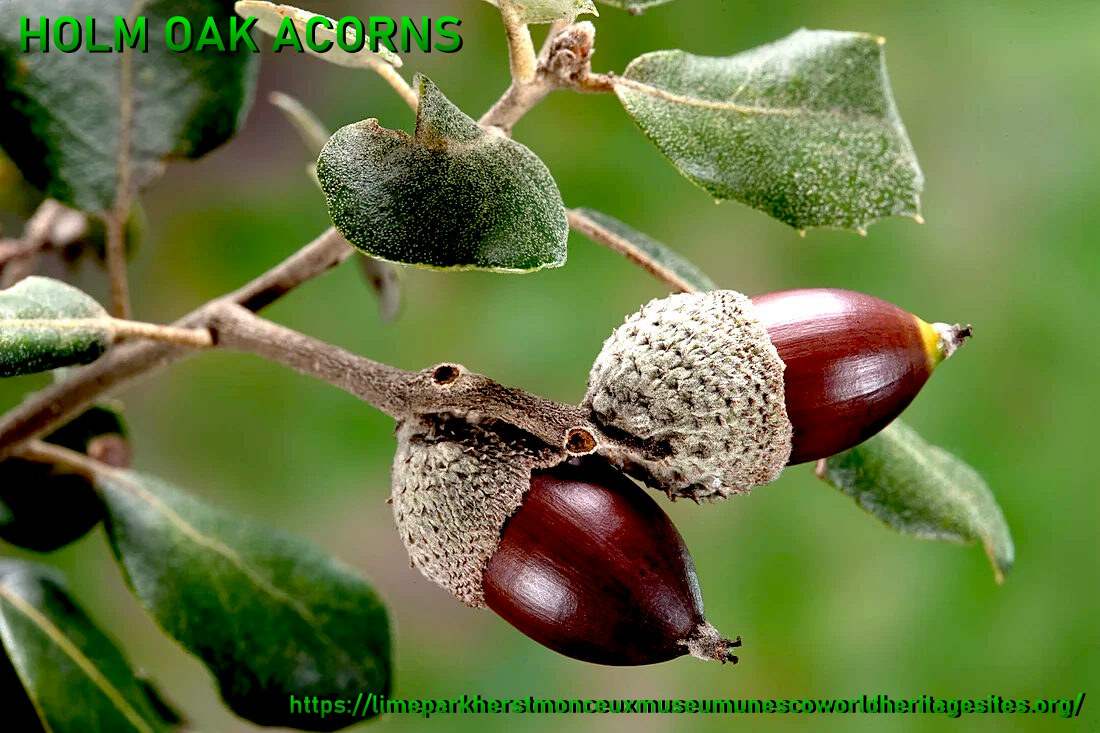
Trees have evolved a mutualistic relationship with insects and birds, as to exchange genetic information and disperse seeds, in return for protein (pollen) and sugar (nectar/fruits).
Proof of this is that almost all the acorns in Lime Park are either
collected or eaten by wildlife.
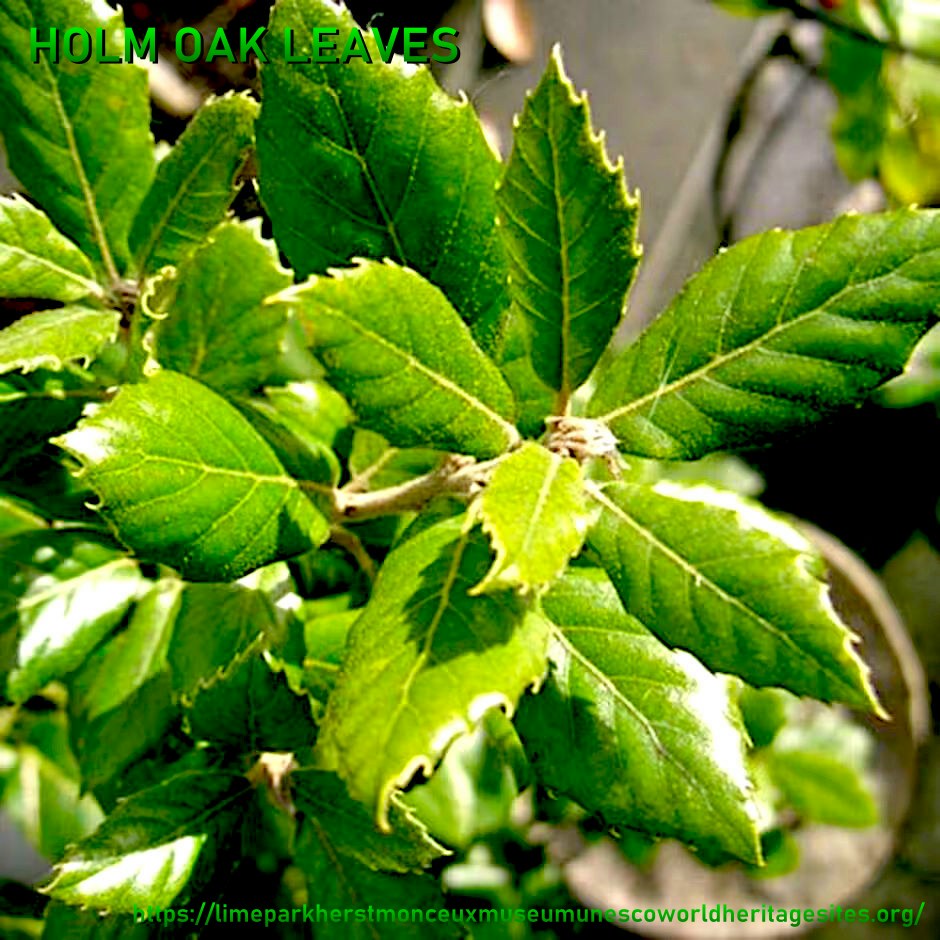
Healthy
leaves on a Holm oak tree
OTHER
EXHIBITS
In
addition to the archaeology contained in the structure of the extant
generating building, together with original switches and other
electrical apparatus, much of which was excavated on site, there are
several innovative vehicles and vessels on permanent display at
Herstmonceux Museum, including:
1.
Art
Gallery - Collection of paintings, pictures, graphics, sculptures,
wooden carvings & exotic glassware
2.
Archives - Historic documents library, patents, trademarks,
copyright, films, catalogued legal papers & letters
3. An
Edwardian ice well, throwback to the days before refrigeration
4.
A large underground (condensation/cooling) and water storage chamber for
ice making
5.
The
world's smallest water basin, test tank for model boats & ships to
1:20 scale
6.
World's smallest
wind tunnel, vehicle drag measuring instrument using electronic
strain-gauges
7.
Three
PV boat models,
Navigator, SWATH & 2 cats + route map prior to Swiss PlanetSolar
8.
Seavax, the ocean cleanup
proof of concept prototype from 2016
9.
AmphiMax, radio controlled (working) beach launching & recovery
vehicle for SeaVax
10.
Anthony the
most dangerous giant
Australian bulldog ant, 300 times normal size
11.
EV - FCEV refueling station
model in 1:20 scale
12.
The only working
(fully functional) water well in Herstmonceux village
13.
The fountain of youth, supplied from natural well water
drawn on site
14.
Second World War, 'Anderson Inspired,' bomb proof shelter constructed by Major Charles de Roemer
15.
City
sports FCEV-BEV, hydrogen gull wing proof of concept DC50 electric car
16.
Land speed record car: Bluebird-Electric BE1 (original 1st) with battery
cartridge exchange
17.
Land speed record car: Bluebird-Electric BE2 (original 2nd) with cartridge
exchange
18.
A complete mummified squirrel, found when re-roofing the Museum June
2017
19.
A fully operational, and restored VW Kombi van dating from 1978
(historic vehicle)
20.
BMW i3, battery electric vehicle hybrid, with onboard generator range
extender
21. Solar panel, sun tracking system,
with battery storage
22.
A hornet's nest found on site & preserved in 2016 (reported as
[Asian] invasive species, to be safe)
23.
Three sewing machines, including an antique Singer and a Brother
industrial.
24. Adventure climbing frames for children (back to nature)
Swiss Family Robinson
25.
'Elizabeth
Swann' proof of concept model 1:20 scale hydrogen powered trimaran
26.
Holm
oaks, planting and growing trees from acorns on site, re-wilding in
Sussex
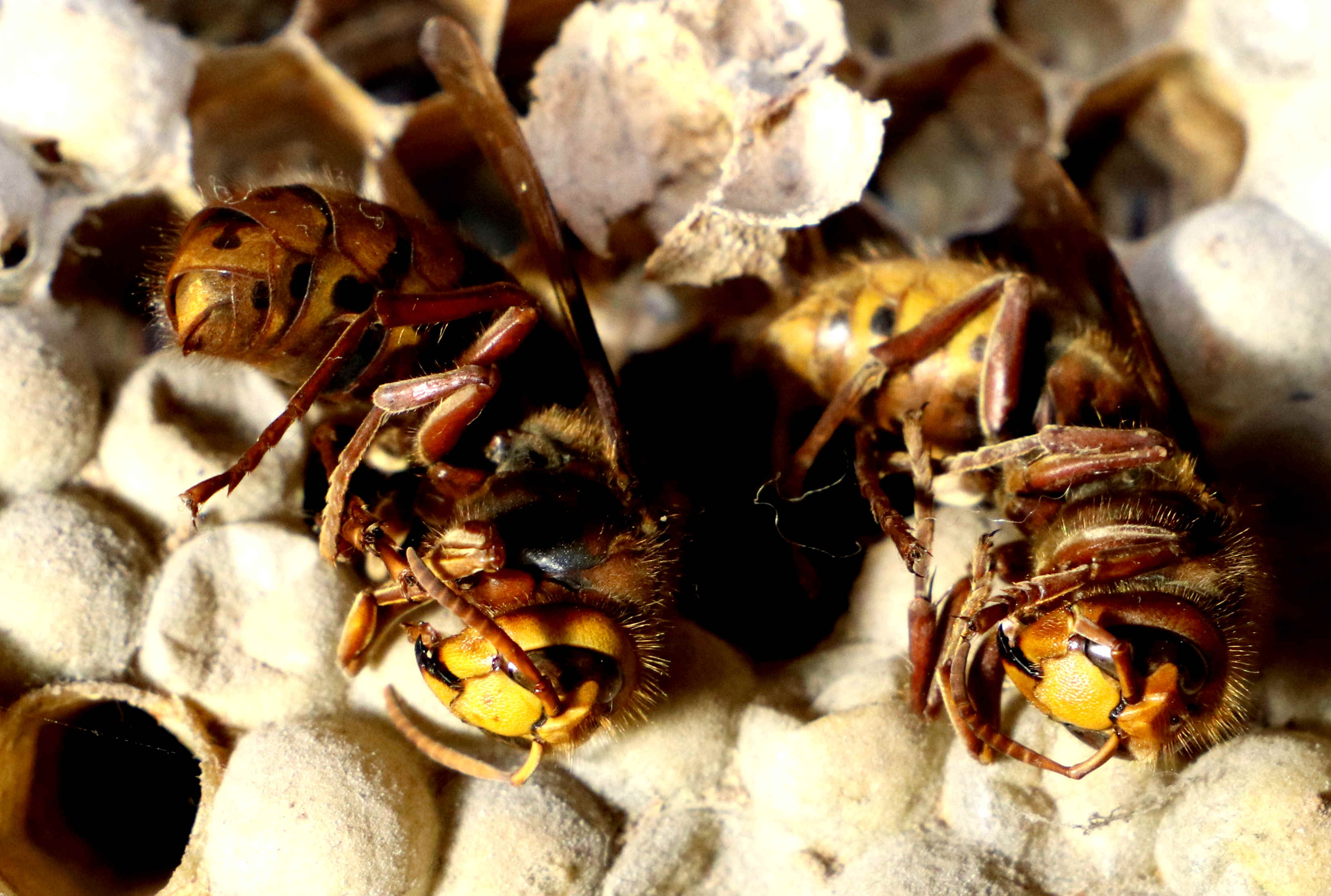
HORNETS
- European hornets found and nesting in Herstmonceux, Lime Park
We
hope that these exhibits might inspire generations of young
scientists,
to think outside the box, as the innovators appear to have come up with
some quite remarkable solutions, all in one place. As some kind of
spontaneous think tank, inventive Mecca, or creative commune, where ideas
come to
life.
